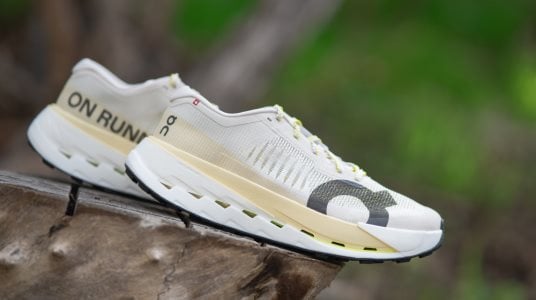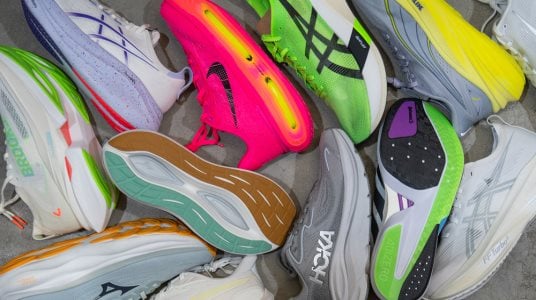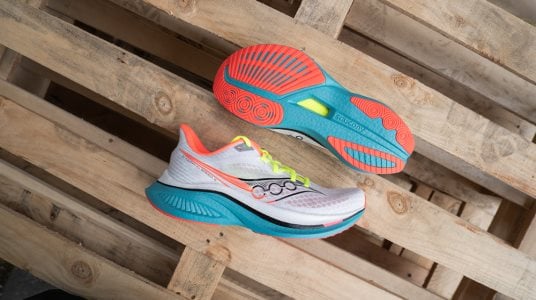Frequently Asked Questions Instore at RunDNA

Your questions and our answers!
There's so many running shoes, gear and accessories flooding the market, it’s easy to feel overwhelmed by the sheer number of options and differing opinions. That’s why we’ve put together answers to some of the most commonly asked questions we get at RunDNA.
1) What's the best shoe?
Unfortunately, it’s not that simple because there’s no single “best” running shoe for everyone. There's many factors that can play a role; from your personal preference, overall fit, use purpose, your goals and even your injury history. Some runners will prioritise cushioning for comfort, while others seek a lightweight, responsive feel for speed. Stability needs also differ, because everyone moves differently!
Thankfully, we’re spoilt for choice with an incredible variety of shoes available today. The best shoe for you should match your intended use, your goals, and what you find most comfortable. Whether you need a high cushion daily trainer for recovery runs, a carbon plated super shoe for race day or a versatile road to trail hybrid, there’s a shoe that fits your specific needs. Trying on different models and getting a proper fit assessment can help you land on a suitable pair.

2) How long will a shoe last?
It depends! There’s no single answer because durability varies based on multiple factors, including the individual runner, wear patterns, frequency of use, shoe type and midsole/outsole construction.
In the past, brands often suggested that running shoes could last up to 1000km, but those days are gone. As running footwear has evolved, so have the materials. With such a broad variety of shoes available today, they’ve become more specialised, softer, and lighter, but often at the cost of durability. If the midsole is a really soft material you can expect that to wear quicker than a firmer density. The amount of outsole coverage and thickness will impact on the lifespan. If you're looking for a durable shoe, look to see if there's a generous coverage of outsole with minimal exposed midsole foam, as that will typically hold up well.
Most daily trainers, if used purely for running, typically last between 400-800km before showing significant wear. Meanwhile, race day super shoes built for speed and performance with lightweight foams and carbon plates, generally have a much shorter lifespan, often topping out at 350km.
If you’re unsure when to replace your shoes, keep an eye on midsole compression, outsole wear and how they feel underfoot. You can also track your shoe mileage on apps such as Strava, Garmin and Coros which can be really handy to keep an eye on it.

3) How should a running shoe fit?
A good fit is essential for comfort and performance and there are a few key guidelines to keep in mind when choosing the right size:
- Toe space: You should have about half a thumb to a full thumb’s width of space between your longest toe and the end of the shoe. This allows for foot swelling during longer runs and in hot weather, helps to prevent bruised or battered toenails.
- Width: Your foot should sit on top of the midsole, not spilling over it . If your foot is bulging over the edges, the shoe may be too narrow.
- Midfoot and rearfoot fit: The shoe should feel secure through the midfoot and heel, providing a locked in feel without being overly tight. Some wiggle room in the forefoot is good!

4) Are carbon plated shoes worth it?
Carbon plated super shoes are definitely worth it if you’re aiming for a personal best or want a fast shoe in your rotation! These shoes provide a significant performance boost, especially for long distance races or speed workouts. Studies suggest that carbon-plated shoes can improve running economy by about 3-4%, meaning you’ll need to expend less energy to run at the same pace.
But it’s not just about the physical benefits. There's also a mental advantage. Wearing a super shoe on race day gives you that extra confidence boost, knowing you have a performance enhancing tool on your side can be just the edge you need, especially in a competitive setting.
It's worth noting these shoes aren't designed for easy jogging and they best utilised within a shoe rotation that consists of a daily trainer.

5) Do I need energy gels?
Energy gels are designed to replace some of the fuel you’re burning during exercise, helping to maintain energy levels and delay fatigue. They provide a quick and easily digestible source of carbohydrates, which your body uses for fuel, especially during longer efforts. We generally recommend considering gels for any run over 60 minutes to keep your glycogen stores topped up and sustain performance. When it comes to how often you should be taking gels within your run, it can be person dependent. However, a gel every 25-45 minutes is our guideline if you've new to taking on nutrition until you determine what works best for you.
There’s also plenty of variety when it comes to energy gels with different brands offering varying carbohydrate counts, caffeine, flavours and consistencies. Some are thicker (e.g. Maurten), while others have a more liquid-like texture (e.g. SIS). Finding the right one comes down to personal preference and what sits best in your stomach during your runs. We suggest it's best to try these during your training so you know what works on race day.

6) Can I use my running shoes for walking?
Yes, you can wear your running shoes for walking, but keep in mind that it may impact their overall durability. Walkers tend to spend more time on the ground with each step, which can lead to faster wear, especially in the outsole and midsole.
This is particularly true for soft, high-stacked running shoes, as their foam compresses more with each step and may wear down quicker when used for walking. If you plan to walk a lot, it’s worth considering a dedicated walking shoe or an older pair of running shoes that have already seen some miles and keep your running shoes just for running!
That said, if comfort is your priority, running shoes can still be a great option for walking, you’ll just want to keep an eye on how they’re holding up over time!

7) Why do running shoes look so "chunky?"
Running shoe midsoles have become much taller in recent years due to advancements in cushioning and midsole technology. The extra stack height isn’t just for looks, it’s designed to provide more comfort, impact protection and energy return, especially for longer runs.
Modern foams are lighter and more responsive, allowing brands to create high-stacked shoes without making them heavy. Super shoes, for example, use thick, soft midsoles combined with carbon plates to enhance running efficiency. Even daily trainers have adopted high stacked designs to improve shock absorption and reduce strain on the legs.
While they might look oversized, these designs help enhance comfort, make running more enjoyable and once you start running in them, you’ll likely appreciate the benefits!

8) How can I stop getting blisters on my feet?
Blisters are often caused by friction, moisture and improper shoe fit, but choosing the right shoes and socks can significantly reduce the risk. Ensuring your running shoes fit correctly is key. Shoes that are too tight create pressure points, while those that are too loose allow excessive movement, leading to friction.
Socks also play an important role. Technical running socks, made from moisture wicking materials like polyester, nylon, or lycra, help keep feet dry by pulling sweat away from the skin. Unlike cotton socks, which retain moisture and increase friction, these fabrics reduce the chances of blisters forming. Many running socks are also seamless, which minimises irritation and rubbing in sensitive areas. Some of the most popular brands we stock instore are Feetures, SHYU, 2XU, Stegien and Lightfeet
If blisters are still an issue, trying different lacing techniques to reduce foot movement inside the shoe or using anti-chafing products like Body Glide can help keep discomfort at bay.

About the author
Nathan Pope - Runner and Shoe Nerd
I'm really passionate about running footwear and how shoes can be used as a tool to get the best of your running, whether that be general fitness or performance.
My favourite event is the marathon. I feel as though the marathon is the ultimate test both physically and mentally! It requires careful planning both within the race and during the training block and it can be super satisfying when it comes together on race day


